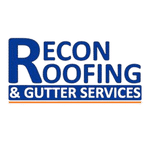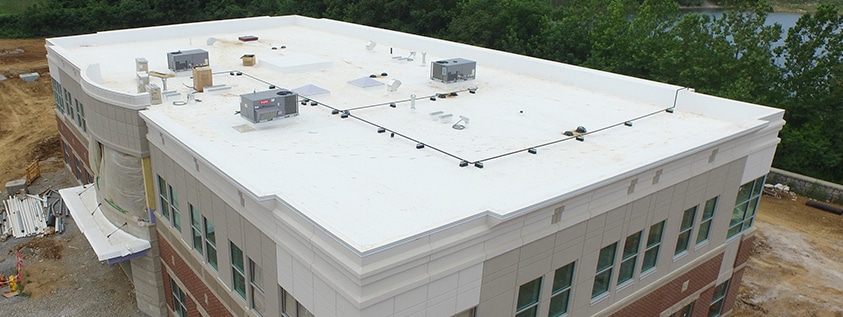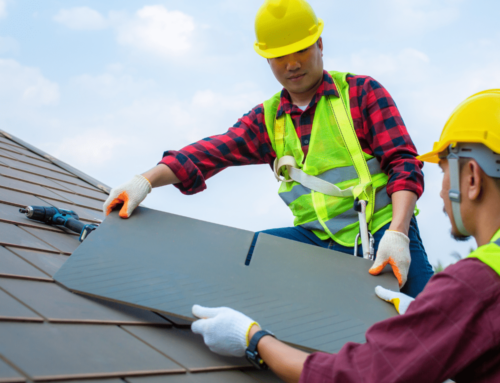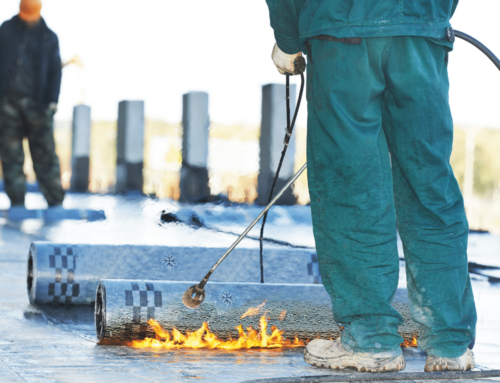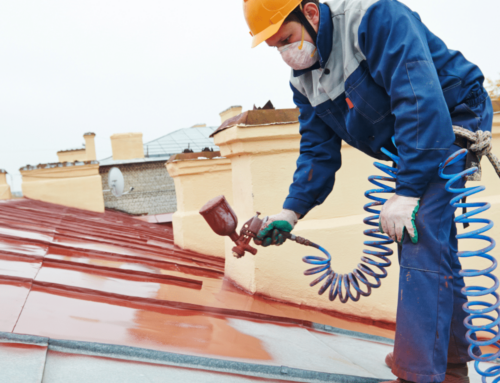When it comes to commercial buildings, roofing is a critical component that deserves special attention. Unlike residential roofing, commercial roofing faces unique challenges and considerations due to the scale and function of these structures. Whether you’re a business owner or property manager, understanding the distinct aspects of commercial roofing can help you make informed decisions and ensure the longevity of your building.
Material Selection
Commercial buildings often have flat or low-slope roofs, which require different roofing materials than the steep-slope roofs commonly found in residential properties. Some popular commercial roofing materials include:
Single-Ply Membranes: These include TPO (Thermoplastic Olefin), PVC (Polyvinyl Chloride), and EPDM (Ethylene Propylene Diene Terpolymer) membranes, known for their durability and energy efficiency.
Built-Up Roofing (BUR): Comprising multiple layers of bitumen and reinforcing fabrics, BUR roofs are robust and suitable for high-traffic areas.
Metal Roofing: Metal roofs are known for their longevity, energy efficiency, and aesthetic appeal. They are an excellent choice for commercial buildings.
Selecting the right roofing material depends on factors such as climate, budget, and intended use of the building.
Roof Design and Function
Commercial roofs often serve multiple functions beyond weather protection. They can host HVAC equipment, solar panels, and other utilities. The design and layout of these components need to be carefully integrated into the roofing system to prevent leaks, structural issues, or interference with drainage.
Regular Maintenance
Due to the size and complexity of commercial roofs, regular maintenance is crucial. Commercial buildings typically have larger roof areas, which means more potential for damage or wear over time. Scheduled inspections and maintenance can identify issues early, preventing costly repairs or premature replacement.
Roof Access and Safety
Commercial buildings must comply with safety regulations regarding roof access. Ensuring safe access for maintenance workers and the installation of safety features like guardrails and access hatches is essential.
Energy Efficiency
Many commercial building owners are increasingly focused on energy efficiency. Proper insulation, reflective roofing materials, and cool roofing systems can help reduce energy costs and environmental impact.
Roof Drainage
Efficient drainage is vital for flat or low-slope commercial roofs. Improper drainage can lead to ponding water, which can compromise the roof’s integrity. Well-designed drainage systems, including gutters and downspouts, are critical.
Codes and Permits
Commercial roofing projects often require adherence to local building codes and obtaining necessary permits. Working with experienced roofing professionals who are familiar with these regulations is essential to avoid legal issues and ensure compliance.
Roof Lifespan
The lifespan of a commercial roof can vary widely depending on factors like material choice and maintenance. Understanding the expected lifespan of your roofing system can help with long-term budgeting and planning.
In summary, commercial roofing is a specialized field that demands careful consideration of various factors to ensure a durable and functional roofing system. Whether you’re constructing a new commercial building or maintaining an existing one, working with experienced roofing professionals who understand the unique challenges of commercial roofing is essential for success.
Protect Your Business Investment! Contact Recon Roofing for Expert Commercial Roofing Solutions. Get Started Today!
